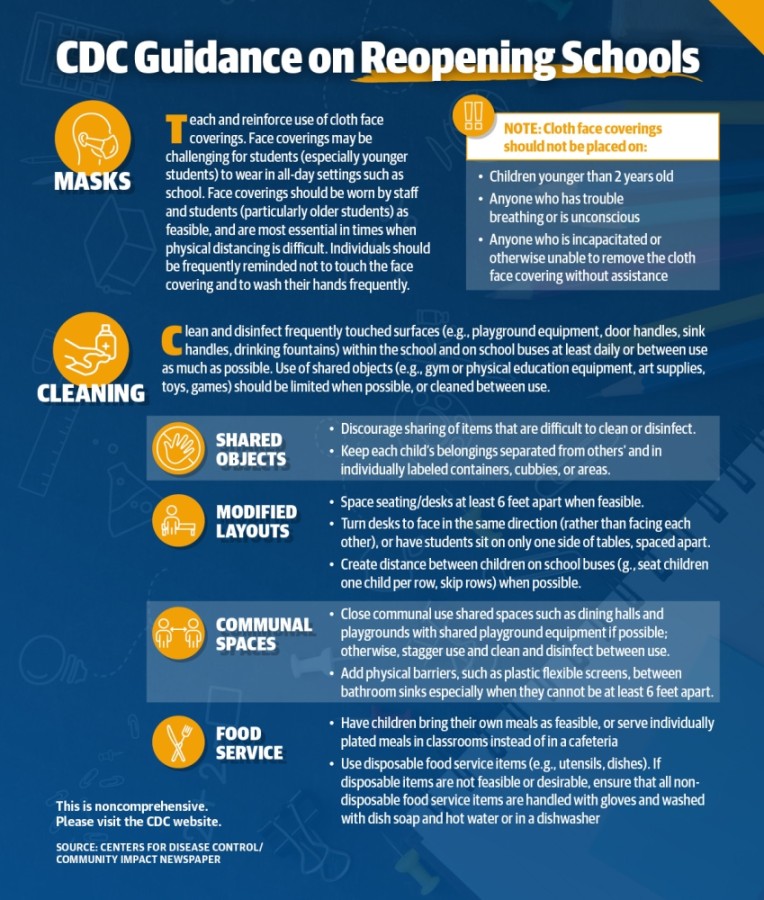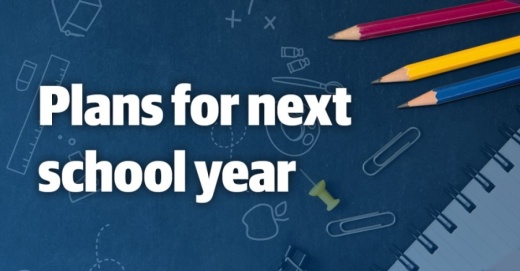Deputy Superintendent Lori Rapp, as well as all the district’s chief executive directors and school chiefs, are launching task forces to address contingency planning related to the coronavirus for the upcoming school year.
“There’s task forces to look at what is typical school going to look like with modifications as far as safety and health modifications that are going to be required,” Superintendent Kevin Rogers told the board.
The task forces will look at contingency plans through the three different lenses of educating at the elementary, middle and high school levels, Rogers said. Task forces are also charged with investigating different education models.
“We have a task force looking at what a hybrid model looks like, where not all the students are in the building at the same time because of space and health and safety precautions,” Rogers said. “Of course, that will also involve transportation and other types of things.”
Another task force is examining what a virtual program would look like, Rogers said. He noted this task force would examine the last nine weeks of the school year and look into ways of improving on that plan.
A separate group will also examine what employee service issues and considerations need to be taken into account, Rogers said. The district also has access to a program that can simulate what happens to the school calendar if a COVID-19 outbreak occurs and the district needs to take two weeks off of school, he said.
To help ensure the district is prepared for the upcoming school year, LISD families will be invited to participate in a survey that will be distributed in late June or early July, Rogers said. The purpose of the survey is to gather information from families about their intentions at the start of the school year and what they plan to do, he said.
Guidance on reopening schools
On May 19, the Centers for Disease Control and Prevention released updated guidance for reopening schools.
"As some communities in the United States open K-12 schools, CDC offers the following considerations for ways in which schools can help protect students, teachers, administrators, and staff and slow the spread of COVID-19," reads the CDC webpage on school guidance. "Schools can determine, in collaboration with state and local health officials to the extent possible, whether and how to implement these considerations while adjusting to meet the unique needs and circumstances of the local community. Implementation should be guided by what is feasible, practical, acceptable, and tailored to the needs of each community."
The CDC highlighted the three risk levels associated with opening schools.
"The more people a student or staff member interacts with, and the longer that interaction, the higher the risk of COVID-19 spread," reads the web page.
According to the CDC, the risk of COVID-19 spread increases in school settings as follows:
- Lowest risk: Students and teachers engage in virtual-only classes, activities and events.
- More risk: Small, in-person classes, activities and events. Groups of students stay together and with the same teacher throughout/across school days, and groups do not mix. Students remain at least 6 feet apart and do not share objects (e.g., hybrid virtual and in-person class structures, or staggered/rotated scheduling to accommodate smaller class sizes).
- Highest risk: Full sized, in-person classes, activities and events. Students are not spaced apart, they share classroom materials or supplies, and they mix between classes and activities.
When it comes to masks, the CDC recommends teaching and reinforcing the use of cloth face coverings for children over the age of 2, but notes that it may be challenging for students to wear them all day in school. The CDC recommends that face coverings be worn by staff and students, particularly older students as feasible, and that the masks are most essential during times when physical distancing is difficult.
The CDC recommends that frequently touched surfaces are cleaned and disinfected at least daily or between use as much as possible. The use of shared objects should be limited when possible or cleaned between use.
Desks should be at least 6 feet apart when feasible, according to the CDC, and all desks should face the same direction. Distance should also be created between students on school buses when possible.
The CDC recommends closing communal use shared spaces—such as dining halls and playgrounds—if possible. If those areas are not closed, school officials are advised to stagger use and disinfect between use. Physical barriers, such as plastic flexible screens, should be added between bathroom sinks when they are not 6 feet apart.
Students should be encouraged to bring their own meals when possible, or schools should serve individually plated meals in classrooms instead of in a communal cafeteria.
The entire list of CDC guidance can be found here.

Additional reporting by Alexa D'Angelo





